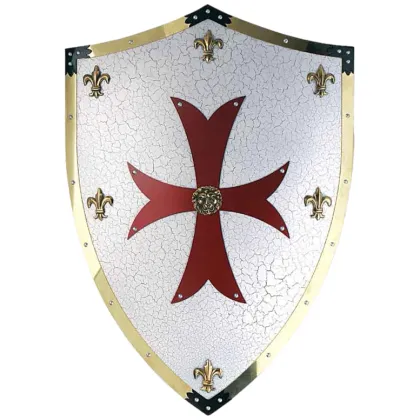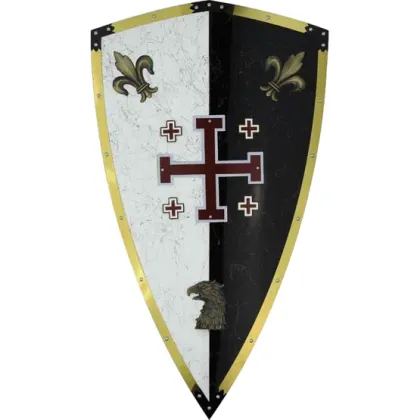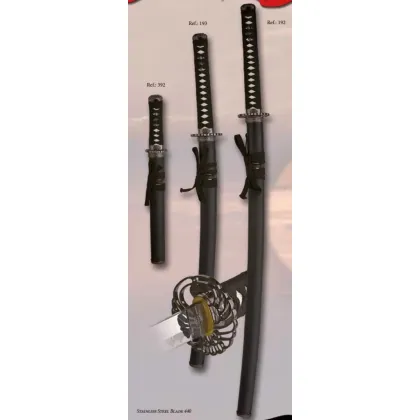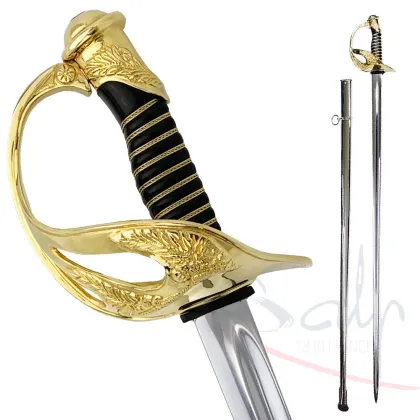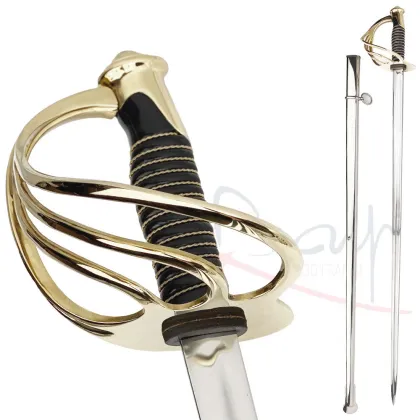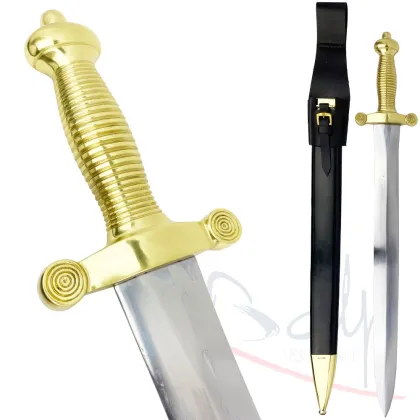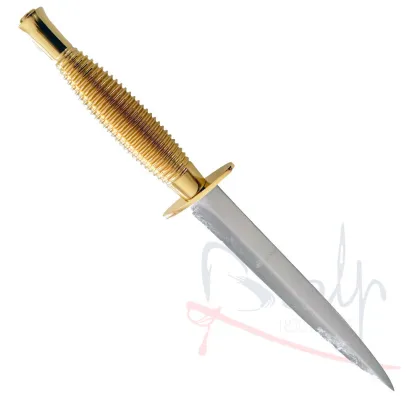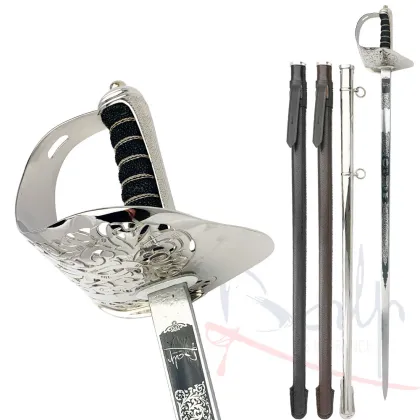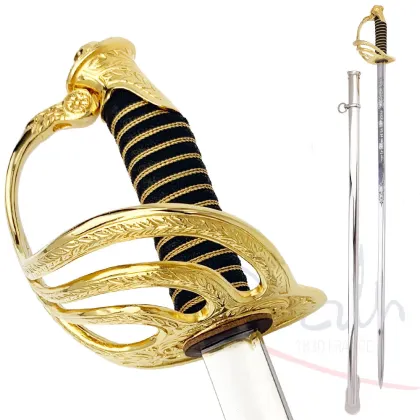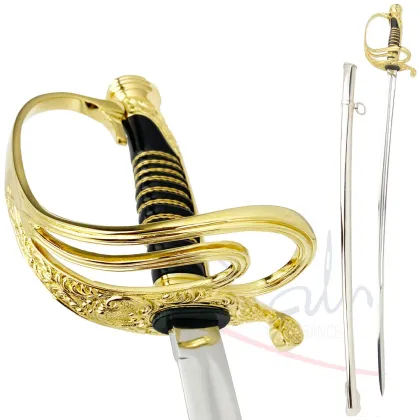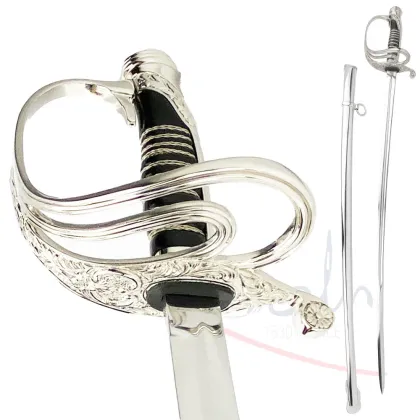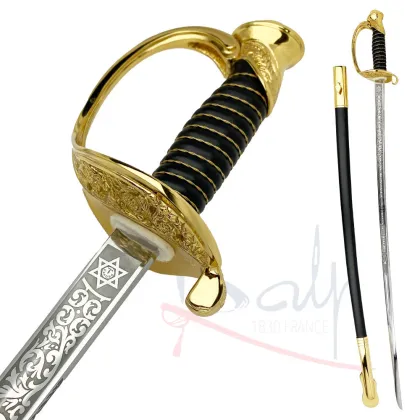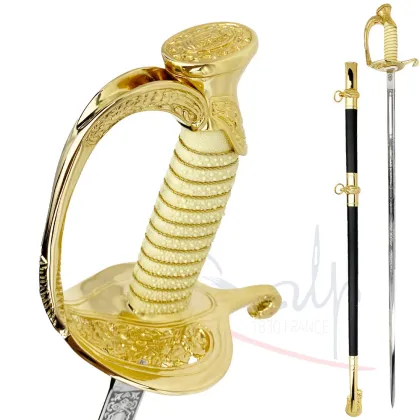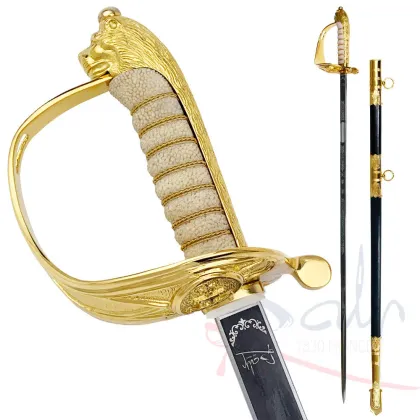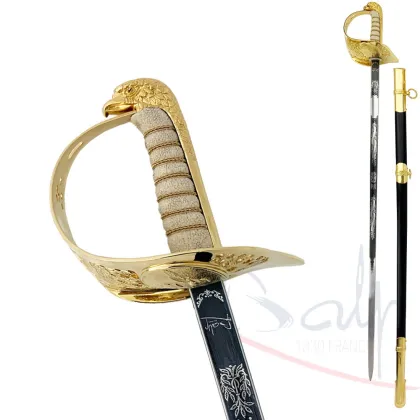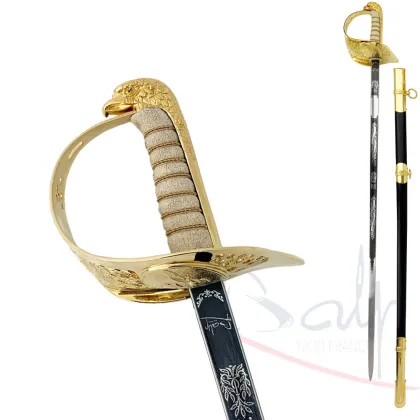Melee weapons
-
Stylish battle artifacts with historical origins
€148.00 -
Original battle artifacts with historical pedigree
€158.00 -
Stylish battle artifacts with historical origins
from €59.00-
to206.00 -
Exclusive replicas of melee weapons
€529.00 -
Luxury replicas of melee weapons
€449.00 -
Exclusive replicas of melee weapons
€296.00 -
Original replicas of melee weapons
€339.00 -
Luxury replicas of melee weapons
€794.00 -
Exclusive replicas of melee weapons
€462.00 -
Exclusive replicas of melee weapons
€443.00 -
Exclusive replicas of melee weapons
€443.00 -
Exclusive replicas of melee weapons
€505.00 -
Original replicas of melee weapons
€492.00 -
Luxury replicas of melee weapons
€849.00 -
Original replicas of melee weapons
€960.00 -
Original replicas of melee weapons
€960.00
In our country, you can legally purchase and keep bladed weapons at home. If you are a part of the group of enthusiasts or collectors, we invite you to explore the offerings in our online store, Luxury Products.
Bladed Weapons - Discover Their Original History
Bladed weapons are items that have a soul and their own story. Each type was created at a specific time and place. They reflected the technology, art, and values of their era. However, before the first swords were made, people fought with sticks, clubs, and sharpened pieces of flint. Around 3000 BC in Greece, short swords like the xiphos appeared, while in the Aegean Sea region, long rapiers and the first decorative blades emerged. Around 1200 BC, weapons began to be made from iron, and later steel. In early medieval Europe, Viking swords were predominant. They were broad and double-edged. In Japan, the technique of forging the katana, the perfect samurai weapon, was developed. In Poland, in the 17th century, the hussar saber appeared, light and deadly effective in a charge. In the 18th and 19th centuries in Europe, bladed weapons were a symbol of rank. Officers carried ceremonial sabers, and gentlemen carried rapiers and swords. They were used to fight for honor. Nowadays, bladed weapons are seen in martial arts, historical reenactments, and collectors' collections.
Collectible Weapons Are the Perfect Gift Idea for a Man
Giving someone a bladed weapon as a gift, for example from the brand Balp, means giving them a piece of history, not just an ordinary gadget, as swords and sabers, whether straight or curved, have been symbols of honor, courage, and status for centuries. In the past, a saber was given to an officer in gratitude for service, and a sword to a knight during knighting. Today, it's a gift that says: "I appreciate you, you are someone special to me.”
Collectible weapons are often works of art. Hand-engraved hilts, inlays on the blade, and ornate handle fittings catch the eye. They will be a beautiful decoration for an office or living room, always sparking conversations. Historical replicas can become the start of a collection or a motivation to delve into history, providing much greater satisfaction than another practical gift.
Where to Buy?
Under the law on weapons and ammunition, most bladed weapons can be legally purchased and owned without any permits, but it is important not to display them publicly. This applies to items like machetes, decorative swords, or bayonets. Such items are generally considered tools, collection elements, or sports accessories. Exceptions include brass knuckles, nunchaku, telescopic batons, and similar items, which the law considers particularly dangerous. Want to be sure you're buying legal bladed weapons? Here's a list of trusted stores:
Military,
hunting,
with souvenirs and replicas,
collector auctions,
Luxury Products online store.
Types of Bladed Weapons - Examples
One of the most frequently asked questions is whether you need a permit for bladed weapons. The answer is no, if they are, for example, swords, sabers, or even hunting knives. Exceptions that require a permit include brass knuckles or switchblades. So, if you're looking for a unique gift for a history enthusiast, it's worth knowing that citizens have free access to the following collectible bladed weapons. It's important not to display them in public places on a daily basis.
Samurai Sword - Katana
This is one of the most recognizable melee weapons in the world - a top-class bladed weapon originating from Japan. In Japanese fencing, it was taught that one precise katana strike should end the fight. This type of weapon also had symbolic significance, representing the honor and status of a warrior. During peacetime, it served more as a part of attire and a sign of belonging to the samurai class. To this day, it is a collectible item and a model of blacksmith craftsmanship.
Bayonets
The first bayonets appeared in the 17th century in France. They were simple knives inserted into the musket barrel, and over the years, they were mounted alongside the barrel. This is how the classic infantry weapon was born. In the 18th and 19th centuries, the bayonet was a symbol of the army. A rifle with a bayonet attached could be up to 2 meters long and provided an advantage in combat against cavalry or infantry without such armament. In battle confrontations, it often determined the outcome. Currently, in Poland, bayonets are presented at military ceremonies as a reference to our country's history.
Daggers
A dagger is a short weapon used for close combat. In the past, it was somewhat of a mandatory accessory for knights. Its greatest advantages included its small size, which allowed it to be effectively concealed, as well as its handiness and sharpness. It was therefore highly effective in hand-to-hand combat. In the Renaissance, decorative versions of daggers appeared, highlighting the social status of men.
Spears
Spears are weapons of fairly simple construction. They consisted of a long, sturdy shaft and a sharp tip made of metal, or even stone or bone. Although not very complex, this tool was truly effective. It allowed the wielder to maintain distance between themselves and their opponent and was also used to deliver blows, for example, by thrusting from a horse or throwing at the enemy.
Axes
This is usually a single-edged weapon, consisting of a shaft and a blade mounted only on one side of the head. Axes were used by both Vikings and cavalry troops. However, the latter used much lighter versions, as they moved on horseback.
Historical Melee Weapons and Their Replicas at Luxury Products Online Store
Purchase melee weapons legally at the Luxury Products online store. Our offer includes replicas of sabers, swords, polearms, bayonets, and other types of melee weapons, including from the premium brand Gladius. Create your own unique collection or give an unforgettable gift to a loved one. With Luxury Products, satisfaction with your purchase is guaranteed.

